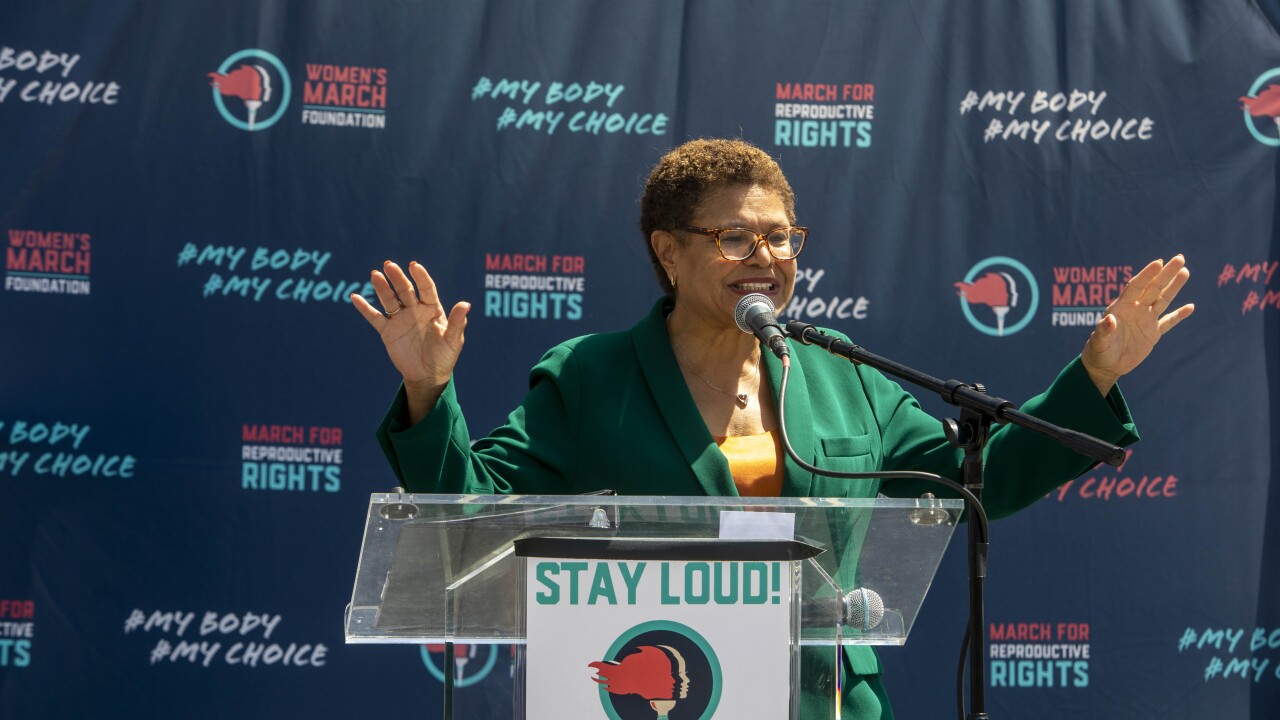
Not surprisingly, loud cheerleading accompanied the announcement by Vice President Joseph Biden and New York Gov. Andrew Cuomo of a new LaGuardia Airport.
Businesses, commuters, politicians and financial analysts all agree on the need to replace the airport terminals in New York City's northern Queens that have become the air travel equivalent of Penn Station -- aged, overcrowded and dreaded.
"You could certainly quibble with the grandstanding and politicking and so forth, but it's certainly good that Gov. Cuomo is doing it. Good for him," said Nicole Gelinas, a senior fellow at the Manhattan Institute for Policy Research. "As for the terminal itself, it's pretty straightforward."
Beyond that, questions remain following Monday's announcement of a $4 billion rebuilding of the 76-year-old airport.
Plans call for a unified terminal, more parking spaces, two additional miles of flight space with a footprint 600 feet closer to Grand Central Parkway, post-9/11 security protocols and options for an air train to the nearby Willets Point-Mets subway station and high-speed ferry service to Marine Air Terminal.
"The part we don't know is the transit part. We don't know the cost or timing yet, or who will pay, the MTA or the Port Authority," said Gelinas.
"It's different to do a transit project - Penn Station, a Hudson River tunnel or the MTA capital plan," she said. "None of these pay for themselves. The ferry's not a huge deal, maybe tens of millions."
The air train could run anywhere from $500 million to $1 billion.
Under a public-private partnership, private capital will cover half the cost of the first phase.
The quasi-public Port Authority of New York and New Jersey, which operates LaGuardia and John F. Kennedy International Airport in Queens and Newark-Liberty Airport in New Jersey, will pay for roughly half.
"The Port Authority pays for its half out of fees from the airlines. The airlines want this, so they're essentially using the Port Authority as a middleman," said Gelinas.
Final approval from the Port Authority board of directors is expected early next year.
Two months ago the Port Authority chose LaGuardia Gateway Partners, a consortium of firms and joint ventures featuring such firms as Skanska and Parsons Brinckerhoff, to build a unified terminal.
According to Cuomo, LGP will design, build, finance, operate and maintain the new terminal as part of a 35-year lease.
The governor referenced the design-build process in the Tappan Zee bridge reconstruction as emblematic of New York's "aggressive, can-do approach to big infrastructure."
According to a study by New York University's Rudin Center for Transportation Policy and Management, the need has never been greater for state governments and localities to use design-build.
"Across the state, key pieces of infrastructure are crumbling and need to be rebuilt," said the report, which RBC Capital Markets and the Association for a Better New York commissioned.
Favorable funding conditions, said the study, include federal post-Hurricane Sandy resiliency money, "ad hoc" revenue streams such as the recent settlements with financial institutions, a low-interest-rate climate in the capital markets and investor demand.
New York's Metropolitan Transportation Authority expects design-build to save about $3 billion from its capital needs.
Buried in Cuomo's LaGuardia announcement on Monday but still noteworthy is that the governor will fund $8.3 billion in next year's budget to help fill a hole in the authority's five-year capital plan.
Cuomo and MTA officials are asking New York City to contribute the balance, up to $3 billion.
State Assemblyman Philip Goldfeder, D-Queens, said airport expansion underscores the need to restore the north-south Rockaway Beach rail line in his borough.
The MTA decommissioned the line in the 1960s.
Goldfeder called on MTA Chairman Thomas Prendergast to apply for a state grant under the passenger and freight-rail assistance program to study the abandoned rail spur. The program, announced earlier this month, commits $17 million to critical improvements at rail and port facilities across New York State.
Queens Borough President Melinda Katz wants the Port Authority to mitigate noise and traffic congestion that affect nearby communities.
The new LaGuardia will feature elevated infrastructure to remain operational during floods and help airport personnel better prepare for extreme weather events. During Superstorm Sandy, which struck on Oct. 29, 2012, roughly 100 million gallons of saltwater flooded the airport, forcing a two-day shutdown that cost the region an estimated $108 million.
"I'm very proud and happy to know that they recognized the need and they actually did it," said Alan Rubin, a climate-change expert and a managing director with Tigress Financial Partners.
Airport construction resilience is trending, said Rubin, who referenced construction at London Heathrow and Dubai International airports intended to buffer against high winds and floods.
"In general, the fact that they even considered resilience at LaGuardia is a credit to the governor and his team. I'd say this is a great step in the right direction."





